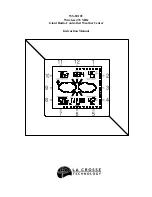
CIRCUIT DESCRIPTION
4-3
November 1999
Part No. 001-7780-500
frequency is low, the VCO-derived input to the phase
detector is lower than the TCXO-derived input (or the
phase lags the TCXO-derived input). Pin 15 of IC1
then pulses low and turns Q1 on. This charges the loop
filter capacitors which increases the VCO control
voltage. The VCO frequency then increases until the
phase detector inputs are again the same frequency and
phase. If the VCO frequency is too high, pin 16 pulses
high which discharges the loop filter capacitors.
The loop filter is formed by R7-R9 and C4/C5.
This is a low-pass filter which controls synthesizer
stability and lock-up time and suppresses the 6.25 kHz
reference frequency.
4.3 RECEIVER CIRCUIT DESCRIPTION
NOTE: A block diagram of the RF and logic units is
located on page 8-3.
4.3.1 RF AMPLIFIER (Q1), FIRST MIXER (Q2)
The receive signal from the antenna is fed
through low-pass filter FI7 and the antenna switch (see
Section 4.4.2) to bandpass filter FI1. This filter attenu-
ates the image and other unwanted frequencies and
also prevents the injection signal from being fed out to
the antenna.
The signal is then fed to RF amplifier Q1. Imped-
ance matching with FI1 is provided by L32, C4, C138,
and R104. The RF amplifier is used to recover filter
losses and improve the sensitivity of the receiver. The
output of Q1 is fed to FI2 which is a bandpass filter
similar to FI1. Impedance matching is provided by L5
and C7.
From FI2 the signal is fed to gate 1 of first mixer
Q2. This is a dual-gate MOSFET device which mixes
the receive frequency with the first injection frequency
to produce a first IF of 45.225 MHz (low-side injec-
tion is used). The injection frequency is from the
synthesizer, and it is fed through a low-pass filter
consisting of C22-C24 and L12. This filter attenuates
harmonic frequencies present in the injection signal. A
3-dB pad consisting of R9-R11 provides the required
input level to the mixer, and L11 and C12 provide
matching.
Impedance matching on the input of Q2 is
provided by C11, L6-L8, and L33. Likewise, imped-
ance matching on the output is provided by C15, L9,
L10, C18, C19, and R99. The first IF signal is then fed
to four-pole crystal filter FI3. This filter attenuates
wideband noise, adjacent channels, frequencies
resulting from intermodulation, and other frequencies
close to the receive channel.
Figure 4-1 Limiter/Mixer/Detector IC3
4.3.2 IF AMPLIFIER (Q2), LIMITER/DETECTOR
(IC3)
From crystal filter FI3, the IF signal is fed to IF
amplifier Q2 on the IF board. This stage provides the
required input level to the next stage. The signal is
then fed to limiter/detector IC3. This device contains
second mixer and oscillator, limiter, detector, squelch,
and RSSI stages (see Figure 4-1).
The IF signal is fed in on pin 16 which is the
input of an internal mixer.The 45.225 MHz first IF
signal is mixed with the 44.775 MHz second injection
signal to produce a second IF of 450 kHz. The 44.775
injection signal is produced by multiplying the TCXO
frequency by three. This multiplication is performed
by Q18 and other components.
The 450 kHz second IF is fed out of IC3 on pin 3
and applied to ceramic filters FI6, FI5, and FI4. These
filters are used to attenuate wideband noise. A
switching network consisting of D13-D16 routes the
IF signal through all three filters with narrow band and
NPSPAC operation, and through only FI4 with wide-
band operation. This switching network is controlled
by WIDE and NAR signals from Q19-Q21. The W/N
44.775 MHz
2nd Injection
1
2
3
4
5
6
7
8
16
15
14
13
12
11
10
9
Oscillator
Mixer
Limiter-Amp
Quad.
45.225
450 kHz 2nd IF
MHz
1st IF
44.775
MHz
FI4, FI5,
Ceramic Filters
FI6
Audio
RSSI
Noise Det
Amp
Out
IF
Out
Detector
Summary of Contents for 7780 Series
Page 1: ......
Page 2: ......
Page 3: ......
Page 4: ......
Page 5: ......
Page 6: ......
Page 7: ......
Page 9: ......
Page 10: ......
Page 11: ......
Page 12: ......
Page 13: ......
Page 14: ......
Page 15: ......
Page 16: ......
Page 17: ......
Page 18: ......
Page 19: ......
Page 20: ......
Page 21: ......
Page 22: ......
Page 23: ......
Page 24: ......
Page 25: ......
Page 26: ......
Page 28: ......
Page 29: ......
Page 30: ......
Page 31: ......
Page 32: ......
Page 33: ......
Page 34: ......
Page 35: ......
Page 36: ......
Page 37: ......
Page 38: ......
Page 39: ......
Page 40: ......
Page 41: ......
Page 42: ......
Page 43: ......
Page 44: ......
Page 45: ......
Page 46: ......
Page 47: ......
Page 48: ......
Page 49: ......
Page 50: ......
Page 51: ......
Page 52: ......
Page 53: ......
Page 54: ......
Page 55: ......
Page 56: ......
Page 57: ......
Page 58: ......
Page 59: ......
Page 60: ......
Page 61: ......
Page 62: ......
Page 63: ......
Page 64: ......
Page 66: ......
Page 67: ......
Page 68: ......
Page 69: ......
Page 70: ......
Page 72: ......
Page 73: ......
Page 74: ......
Page 75: ......
Page 76: ......
Page 77: ......
Page 79: ......
Page 80: ......
Page 81: ......
Page 82: ......
Page 83: ......
Page 84: ......
Page 85: ......
Page 86: ......
Page 87: ......
Page 88: ......
Page 89: ......
Page 90: ......
Page 91: ......
Page 92: ......
Page 93: ......
Page 94: ......
Page 95: ......
Page 96: ......
Page 97: ......
Page 98: ......
Page 99: ......
Page 100: ......
Page 101: ......
Page 102: ......
Page 109: ......
Page 110: ......
Page 111: ......
Page 112: ......
Page 113: ......
Page 114: ......
Page 115: ......
Page 116: ......
















































